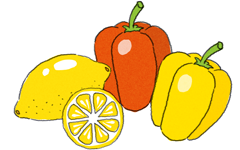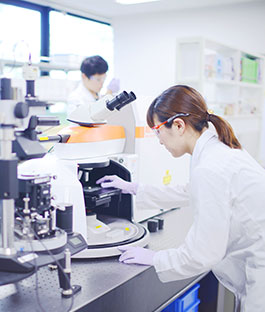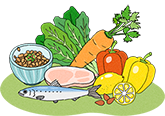Vitamin C

Vitamin C functions in a variety of biological processes, including as a coenzyme in collagen synthesis and as an antioxidant. Vitamin C is found in raw fruits and vegetables. Vegetables rich in vitamin C include paprika, parsley, and brussels sprouts; fruits rich in vitamin C include acerola juice, kiwifruit, and strawberries. Boiled foods are an inefficient source of vitamin C because vitamin C is water soluble, and boiling causes it to leach out of fruits and vegetables.
Vitamin C absorption depends on the amount taken and the timing relative to meals, but because of large individual differences between people, there isn't clear data on absorption rates.
The Ministery of Health, Labour and Welfare (MHLW) publication Dietary Reference Intakes for Japanese does not define a tolerable upper intake level (the maximum amount that a person can consume without risking adverse health effects from overdose). However, taking a large amount of vitamin C can cause gastrointestinal symptoms such as diarrhea.
Natural and synthetic vitamin C have the exact same chemical structure, so there is no difference in their absorption, effects, or safety.
Vitamin C absorption depends on the amount taken and the timing relative to meals, but individual differences make it hard to say exactly how big an effect there is. Some people who have never taken vitamin C get diarrhea when they take over 1g at one time on an empty stomach. Ideally, you should get all of your vitamin C through your three daily meals.
(Source: Vitamin C and Health, revised edition by Murata Akira)
Iron is mainly absorbed in the duodenum, which is slightly alkaline due to the intestinal juices there. Meanwhile, iron ions can take two forms: Fe2+ and Fe3+. Fe2+ dissolves more easily in alkaline conditions than Fe3+. Vitamin C makes it easier to transition from Fe3+ to Fe2+, which increases iron absorption.
There have been many conflicting reports, and it is not currently clear whether taking too much vitamin C increases the risk of kidney stones.






